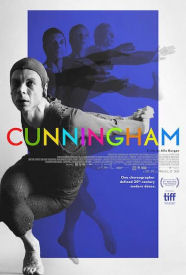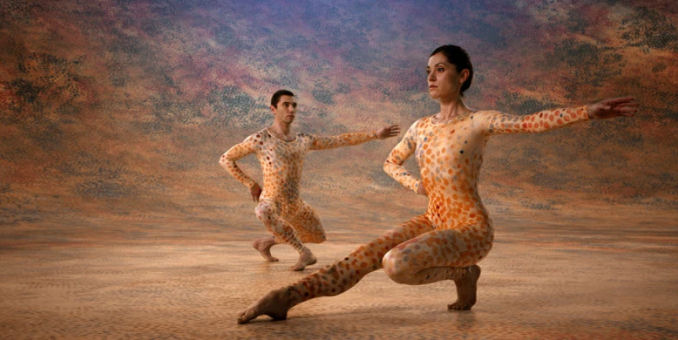 We first reviewed the 3D documentary Cunningham as part of our coverage of the Philadelphia Film Festival earlier this month. We represent now as it goes into a limited theatrical release this weekend.
We first reviewed the 3D documentary Cunningham as part of our coverage of the Philadelphia Film Festival earlier this month. We represent now as it goes into a limited theatrical release this weekend.
As an art form, dance could perhaps be described as movement through three-dimensional space. As such, it seems odd that the list of 3D films about or featuring dance in which it os featured as its own art form is so distressingly short. In addition to Wim Wender’s 2011 documentary Pina, about dancer Pina Bausch, there is really only portions of 1953’s Kiss Me Kate, which features the work of the great Hermes Pan and relative newcomer Bob Fosse, and 2010’s Step Up 3D. (I am purposely leaving out any pop act concert film presented in 3D as there the dancing is only an adjunct of the performance and not the performance as whole to itself.) Director Alla Kovgan’s new documentary Cunningham is a welcome addition to that small canon.
The film tracks choreographer Merce Cunningham’s career from 1942 through to 1972, charting his rise to prominence in the dance world. Cunningham’s work and ideas were initially so far removed from the mainstream of critical thought that his initial performances were derided by critics. His statement that his type of dance did not interpret music or an emotion, but just presented movement and allowed the audience to draw their own meaning from it was somewhat radical for the time. But all the while, Cunningham would reject the sobriquet of “avant garde,” always claiming to be just “a dancer.”
Kovgan tells Cunningham’s story partially through archival footage and interviews. While thia material obviously not shot in 3D, Kovgan takes and isolates these clips in various posotoons of her overall frame, popping them out onto a swparate plane from some background image. She also split-screens her frame with two different clips, setting them in their own individual depths. Kovgan’s own experimwntation with visual presentation feels akin to Cunningham’s own dance philosophies and all the more appropriate here.
Cunningham also takes advantage of the fact that cinema can’t take its audience anywhere. Rather than recreate a number of Cunningham’s iconic dance pieces on a stage such in the way that they were first presented, Kovgan mounts them in spaces far removed from the theatrical experience – in a tunnel, an open courtyard, the roof of a city building while traffic and an elevated train rumble by. And as the 3D camera moves through the chosen performance spaces and among the dancers themselves, the audience is left with an experience and perhaps even an appreciation for each piece that those who saw them originally could not reach.


